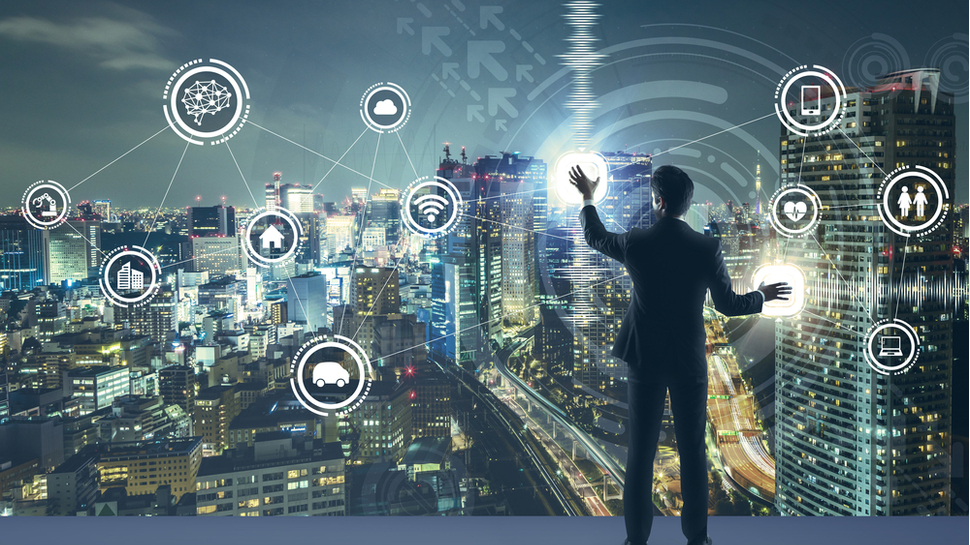The COVID-19 crisis has affected individuals, businesses and communities in a way we’ve simply never seen before. Government-imposed lockdowns have resulted in demands on businesses changing, with the physical moving to digital seemingly overnight. Weeks became months, and what started with business continuity is now seeing organizations shift their focus towards what’s next.
Delivering operational efficiency, as well as improving the overall digital customer experience, must play center stage for businesses if they are going to survive – as well as thrive – as we move throughout the pandemic. It’s without doubt that the businesses that can adapt most effectively will fare best.
From physical to digital
We’ve all experienced first hand how the coronavirus forced us into changing the way we interact with each other, as well as how we do business. From meetings to Zoom. From in-store to online. From conference centers to webinars. All of this change has led to leaders placing a larger-than-ever emphasis on their digital experience – for both customers and employees.
The shift from the office to home-working has meant that employers have had to invest in ensuring the right video conferencing, collaboration and cloud computing software is accessible securely for staff members. CIOs have been tasked with ensuring their infrastructure is built to withstand changing employee and customer demands. Whether we’re at home or work, we’re asking more of our networks than ever before.
The growth of IoT
These changing demands have accelerated the consideration and deployment of new technologies to transform operations, whether they are employee or customer-facing. Technologies such as IoT are able to perform both practical use-cases – like smart lighting or energy meters – as well as more strategic deployments that are integrated within broader operations/IT. Whichever end of the spectrum, businesses and the public sector are just discovering the benefits the technology can provide, both in terms of increased efficiency and improved end-user experiences.
According to IDC, two thirds (67%) of European businesses were already using or planning to adopt IoT technologies before the pandemic, and this percentage is only continuing to grow. For example, at the outset of COVID-19, organizations invested in connected temperature check devices in public buildings and workplaces to ensure the safety of their employees. Due to pressures on IT spend, many have looked into deploying IoT solutions to automate larger-scale, previously human processes, in order to help cut costs across the business.
Powering a network that works for you
IDC estimates there will be 41.6 billion connected IoT devices, or “things,” generating 79.4 zettabytes (ZB) of data in 2025 – and deploying such technology will alter the demands placed on your network. Different network architectures will need to be installed in buildings, for example, in order to meet this new requirement.
Deploying thousands of connected ‘things’ that each consume large data volumes requires strong and reliable connectivity, of course, but consideration must also be given as to how those devices can be powered. Many devices now depend upon Power over Ethernet (PoE), and increasingly at higher power levels. Older cabling may not support these needs, so IT and operations teams must work to ensure that the wired connectivity is suitably modern. There are emerging approaches such as single-pair Ethernet which may also provide simplified installation and management for IoT devices in the future.
The evolving network investment
Making investments such as these in your network would traditionally carry expectations of significant capital outlay. And when revenues are down and you’re trying to manage your cash flow, this could make for a difficult decision for businesses. But today that needn’t be the case. The ‘as-a-service’ working model has steadily moved to the forefront in recent years, and while this was traditionally associated with software, it is now being applied to infrastructure and networking. This helps by removing the financial burden of purchasing assets at a high outlay and seeing them depreciate over time.
Another aspect to consider when reviewing your future network is the evolution of next-generational technologies – including the likes of 5G and Wi-Fi 6. A question we are commonly asked is ‘which one should I choose?’ The answer from our side is that, rather than exclusivity between them, we are seeing convergence. These wireless and wired networks are complementary of each other and many enterprises will need both. This is especially true as they work together across a multitude of different use-cases with differing requirements.
As we look ahead into 2021 and beyond, we see the opportunity to leverage the network to improve organizations, driving business outcomes such as increasing efficiency, cutting costs and improving health and safety, as well as the overall customer and employee experience.
We’re all in the process of adaptation and future-proofing. It looks like the new normal is here to stay – and the network has never played a more fundamental role as we adapt to meet changing requirements.
- Lewis White, VP of Enterprise Infrastructure for Europe, CommScope, and Gary Newbold, VP of Networking for EMEA, CommScope.





